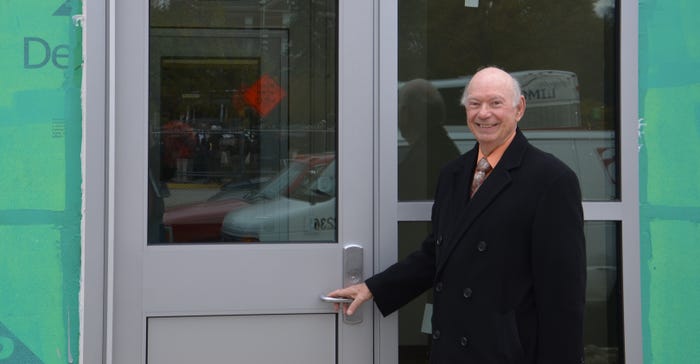
Tons of sensors record everything that happens to plants under study at the Purdue University Agronomy Center for Research and Education, formerly known as the Purdue Agronomy Farm. Information on plants growing in the field environment is collected by sensors and fed to computers inside the Indiana Corn and Soybean Innovation Center located at ACRE and through fiber optic cable directly to campus. But that facility, also known as the field phenotyping center, is only a portion of the effort launched as part of the Plant Sciences Initiative through the Purdue Moves campaign.
“A sister facility located on campus next to existing greenhouses used by both the Agronomy Department and the Department of Botany and Plant Pathology is the rest of the story,” says Marshall Martin, interim director of the Indiana Agricultural Experiment Station. “This controlled phenotyping facility on campus will allow researchers to study what happens to plants when they can control variables they can’t control outside.”
1st look
The new Controlled Environments Phenotyping Facility will be a one-of-a-kind facility once it’s up and operating. Julie Hickman, project manager, arranged for a tour through the building while construction was still underway. Chris Hoagland, facility manager, helped conduct the tour.
Here are key points of interest.
• Conveyor belt system. Plants, each in its own larger-than-normal-sized pot, will move through the center on a series of conveyors, Hickman says. Plants will be kept in a growth chamber where environmental conditions are carefully controlled, based on prescriptions set by those conducting experiments. Variables that can be controlled include temperature, moisture in the pots, humidity, and amount, duration and timing of light.
When it’s time to get images of the plants, they will move out of the growth chamber on the conveyor belts to the cameras. Once imaging is finished, the belts will move them back to their location inside the growth chamber.
“Right now we have one growth chamber equipped for plants,” Hickman says. “We have space to add a second one later.”
• Growth chamber. This is clearly the heart of the facility. “Researchers will be able to study and get images without clouds and gusts of wind interfering,” Hoagland says. “The idea is to determine and examine traits and plant reactions in a controlled environment. Then researchers can go to the phenotyping center at ACRE to find out if they see the same things in the real world.”
• Root and shoot imaging. “One camera location will get images of the top growth of plants,” Hoagland says. “What’s important here is we also have a camera that will be able to get images of the roots, too. We can do all of that without destructing plants. That’s a real plus.”
• Greenhouse plants. Placement of the facility next to existing greenhouses is no accident. “Researchers will be able to bring plants they’re growing in the greenhouses across the hall to this facility,” Hickman says. “They will be placed on the conveyor belts and go through camera stops so researchers can get images.”
Hoagland will be inspecting every plant before it enters the controlled facility, primarily looking for insects or diseases. “We’re going to be very careful not to contaminate the controlled phenotyping center,” he says. “Greenhouse plants won’t enter the growth chamber.”
Hoagland hopes to do dry runs of equipment by midwinter, and begin bringing plants into the facility soon afterward.
Check out the slideshow to see photos from the controlled phenotyping center.
About the Author(s)
You May Also Like




